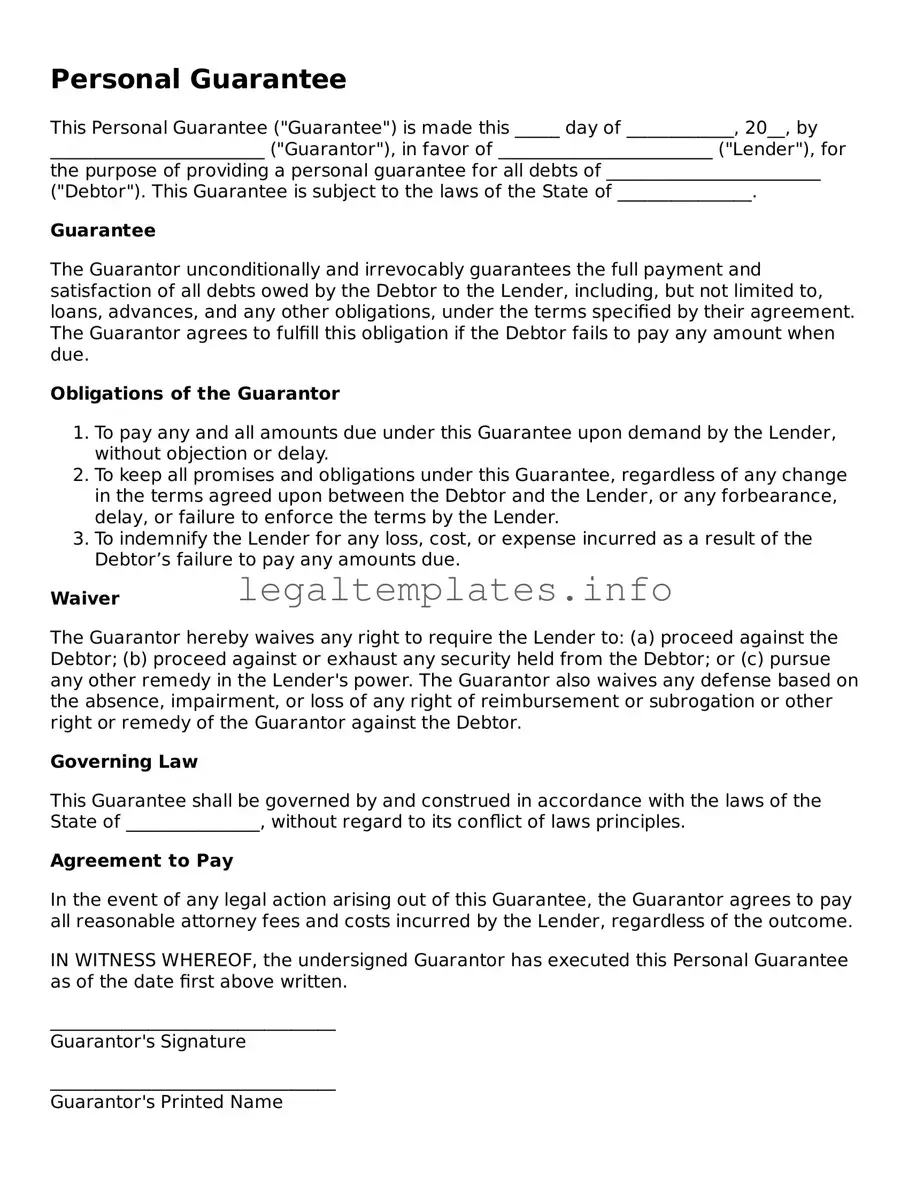Personal Guarantee
This Personal Guarantee ("Guarantee") is made this _____ day of ____________, 20__, by ________________________ ("Guarantor"), in favor of ________________________ ("Lender"), for the purpose of providing a personal guarantee for all debts of ________________________ ("Debtor"). This Guarantee is subject to the laws of the State of _______________.
Guarantee
The Guarantor unconditionally and irrevocably guarantees the full payment and satisfaction of all debts owed by the Debtor to the Lender, including, but not limited to, loans, advances, and any other obligations, under the terms specified by their agreement. The Guarantor agrees to fulfill this obligation if the Debtor fails to pay any amount when due.
Obligations of the Guarantor
- To pay any and all amounts due under this Guarantee upon demand by the Lender, without objection or delay.
- To keep all promises and obligations under this Guarantee, regardless of any change in the terms agreed upon between the Debtor and the Lender, or any forbearance, delay, or failure to enforce the terms by the Lender.
- To indemnify the Lender for any loss, cost, or expense incurred as a result of the Debtor’s failure to pay any amounts due.
Waiver
The Guarantor hereby waives any right to require the Lender to: (a) proceed against the Debtor; (b) proceed against or exhaust any security held from the Debtor; or (c) pursue any other remedy in the Lender's power. The Guarantor also waives any defense based on the absence, impairment, or loss of any right of reimbursement or subrogation or other right or remedy of the Guarantor against the Debtor.
Governing Law
This Guarantee shall be governed by and construed in accordance with the laws of the State of _______________, without regard to its conflict of laws principles.
Agreement to Pay
In the event of any legal action arising out of this Guarantee, the Guarantor agrees to pay all reasonable attorney fees and costs incurred by the Lender, regardless of the outcome.
IN WITNESS WHEREOF, the undersigned Guarantor has executed this Personal Guarantee as of the date first above written.
________________________________
Guarantor's Signature
________________________________
Guarantor's Printed Name
________________________________
Date
